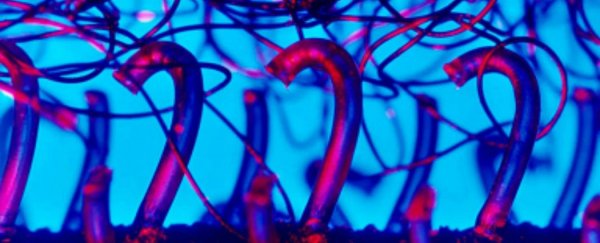Researchers have come up with a new way of growing heart tissue in the lab, and the key innovation borrows from the 'hook-and-loop' fastening mechanism we all know as Velcro. While human cell tissues have been grown in the lab before, this new method allows sheets of the tissue to be snapped together and stacked, and that means more flexibility for scientists and doctors.
"One future scenario you can imagine is: every individual has a unique infarct [area of dead tissue], or in the case of a myocardial infarction, a unique location or perhaps a smaller or larger size," one of the researchers, Miles Montgomery from the University of Toronto in Canada, told Motherboard. "Almost in situ, you could make a designer tissue, on-location, that could be built up to fit the patient perfectly."
The scientific community is making steady progress towards one day being able to patch human organs with tissue grown in a lab, and this research will hopefully get them there faster. In particular, it could enable scientists to grow cells in three dimensions, as well as ensuring that they all beat together in unison - something that's very important when you're dealing with heart tissue.
The researchers used scaffolds shaped like honeycombs, with T-shaped posts at the top of each one, and these are the hooks used to stack layers on top of one another. Inside the human body, proteins and support cells act as natural scaffolds, and the scientists used a special polymer called POMaC to build their own versions.
During tests, which have been described in Science Advances, the entire stack of cells beat together almost immediately when an electrical current was passed through them. The next step is finding out how to get these lab-grown structures working inside the human body, and then coming up with a non-invasive delivery mechanism. The process isn't just restricted to the heart, either: liver and lung tissue could be created in the same way according to the authors of the new report.
"One of the main advantages is the ease of use," adds project leader Milica Radisic. "We can build larger tissue structures immediately before they are needed, and disassemble them just as easily. I don't know of any other technique that gives this ability. If you had these little building blocks, you could build the tissue right at the surgery time to be whatever size that you require."
And speaking of Velcro, here's what it looks like under a microscope:

